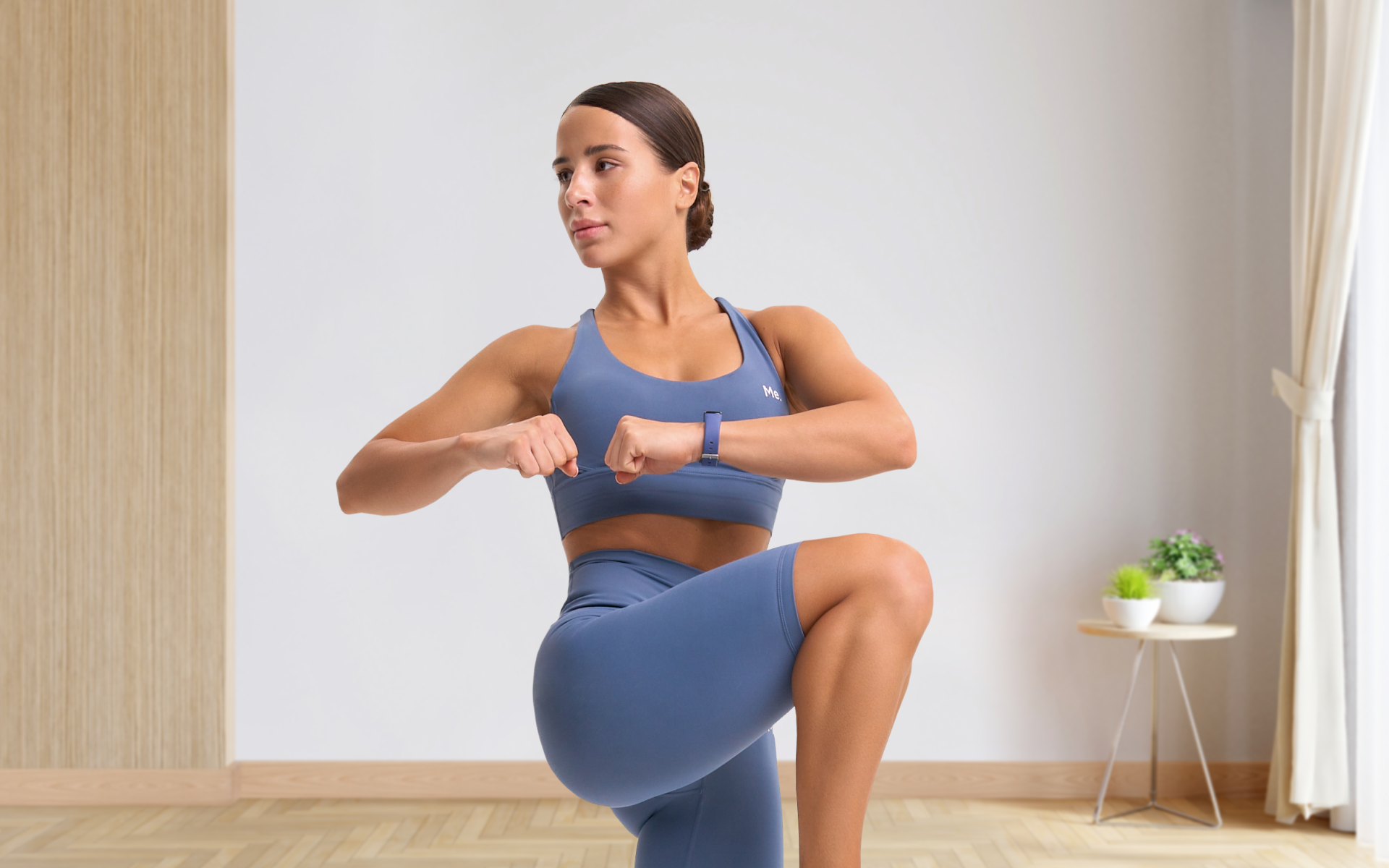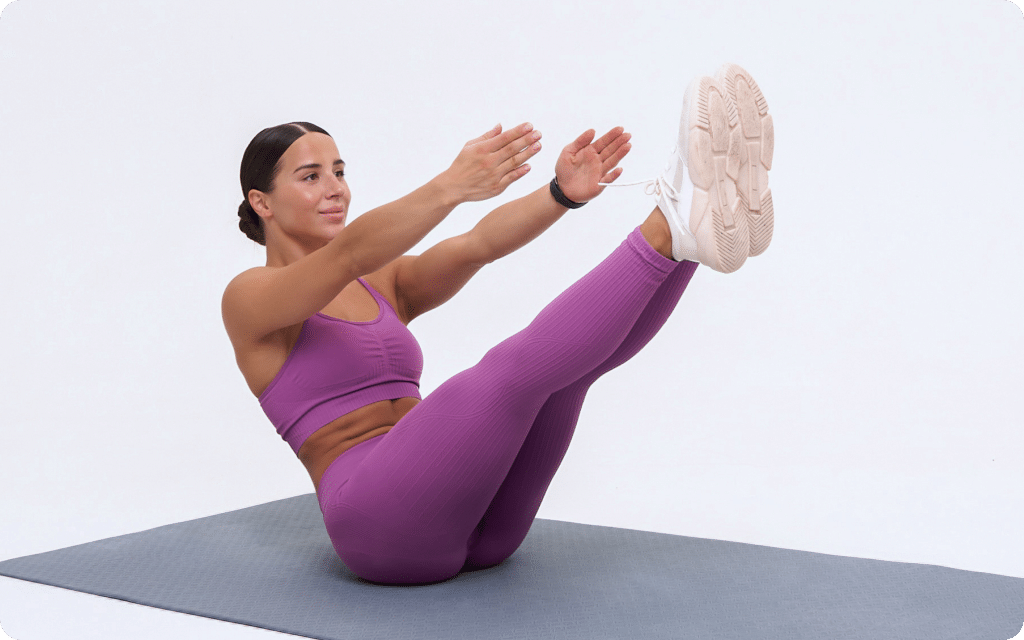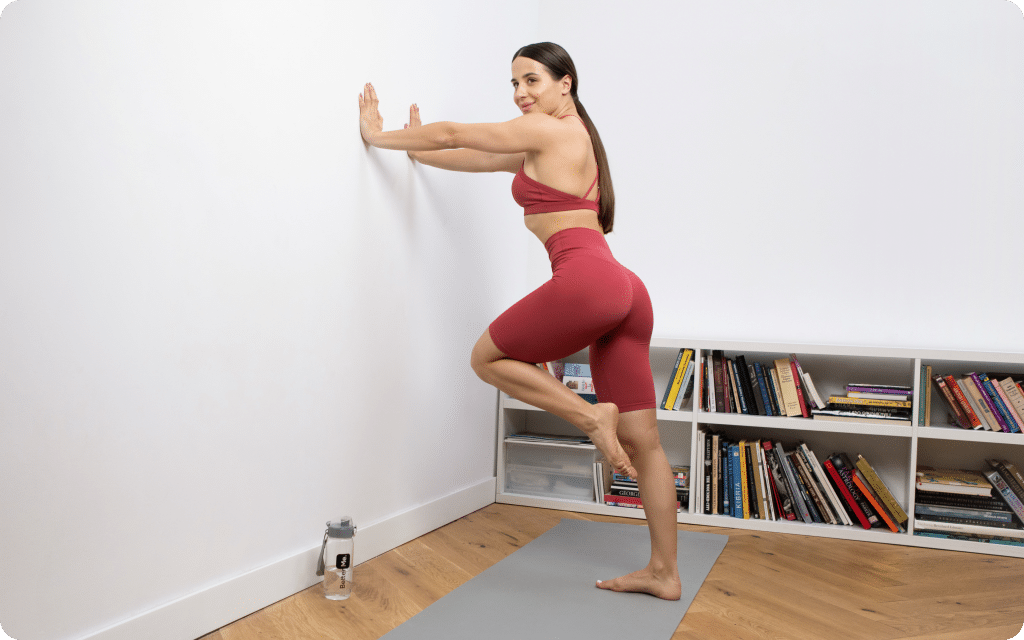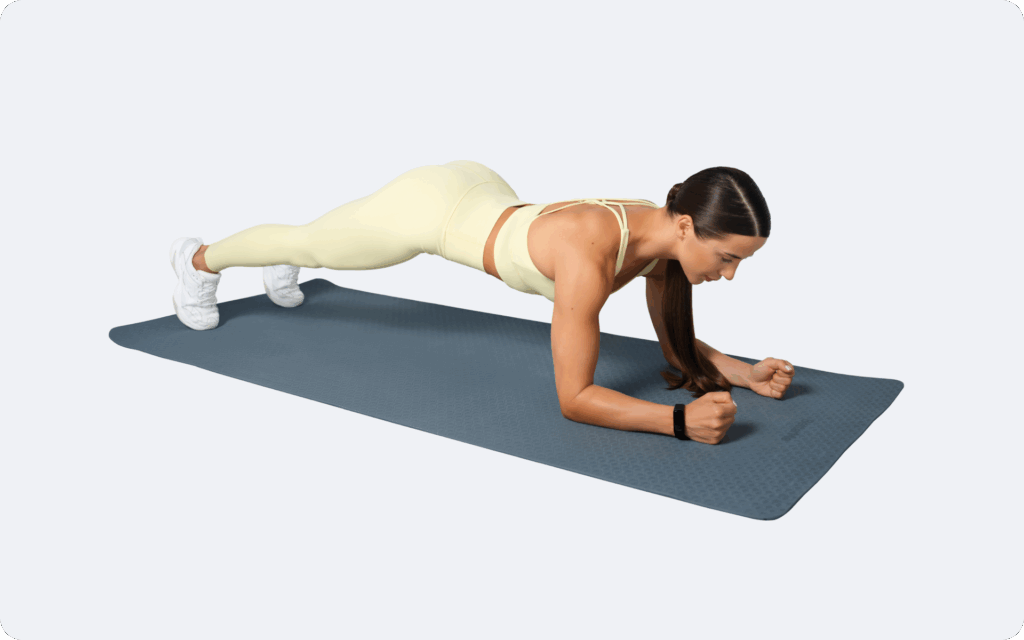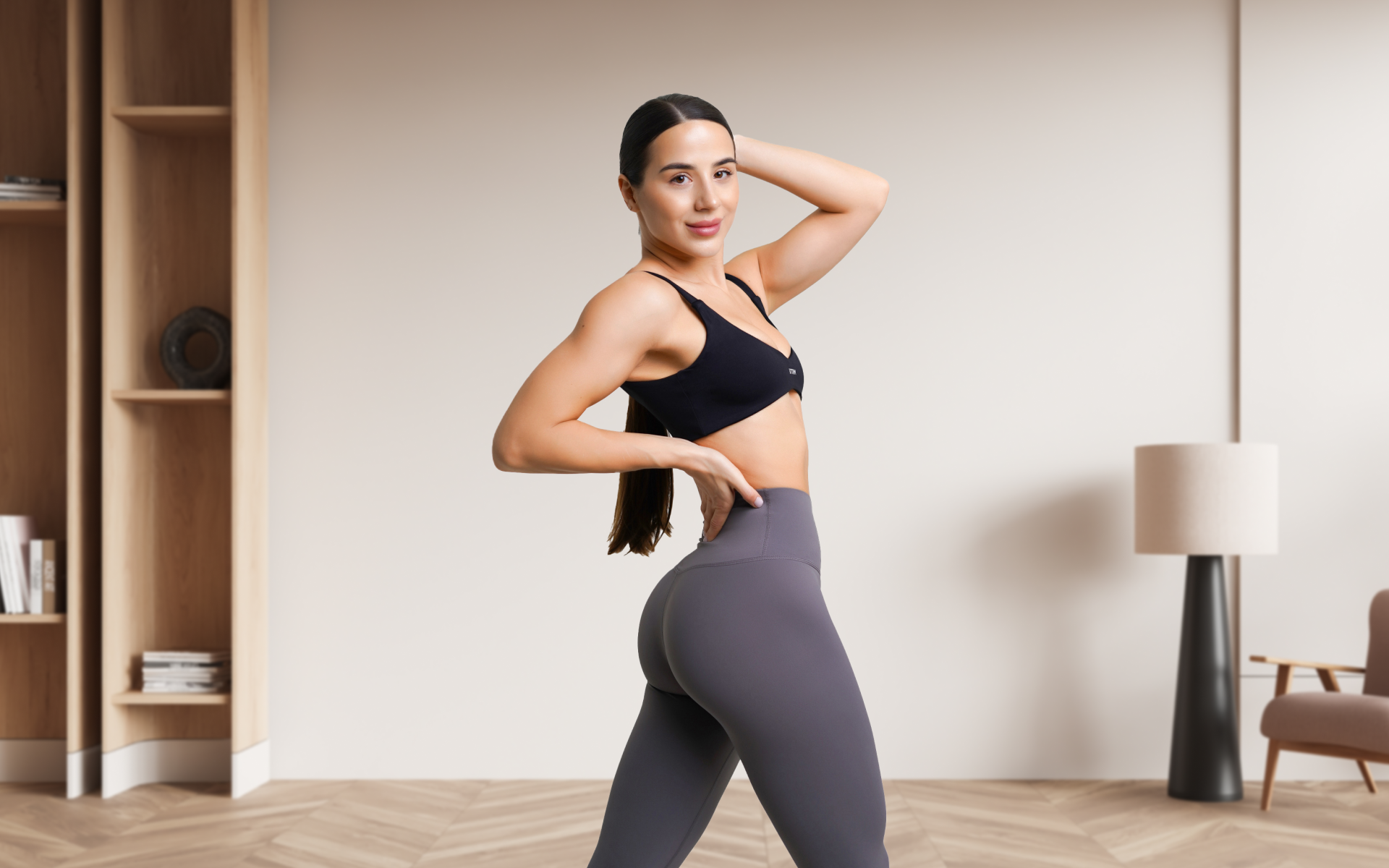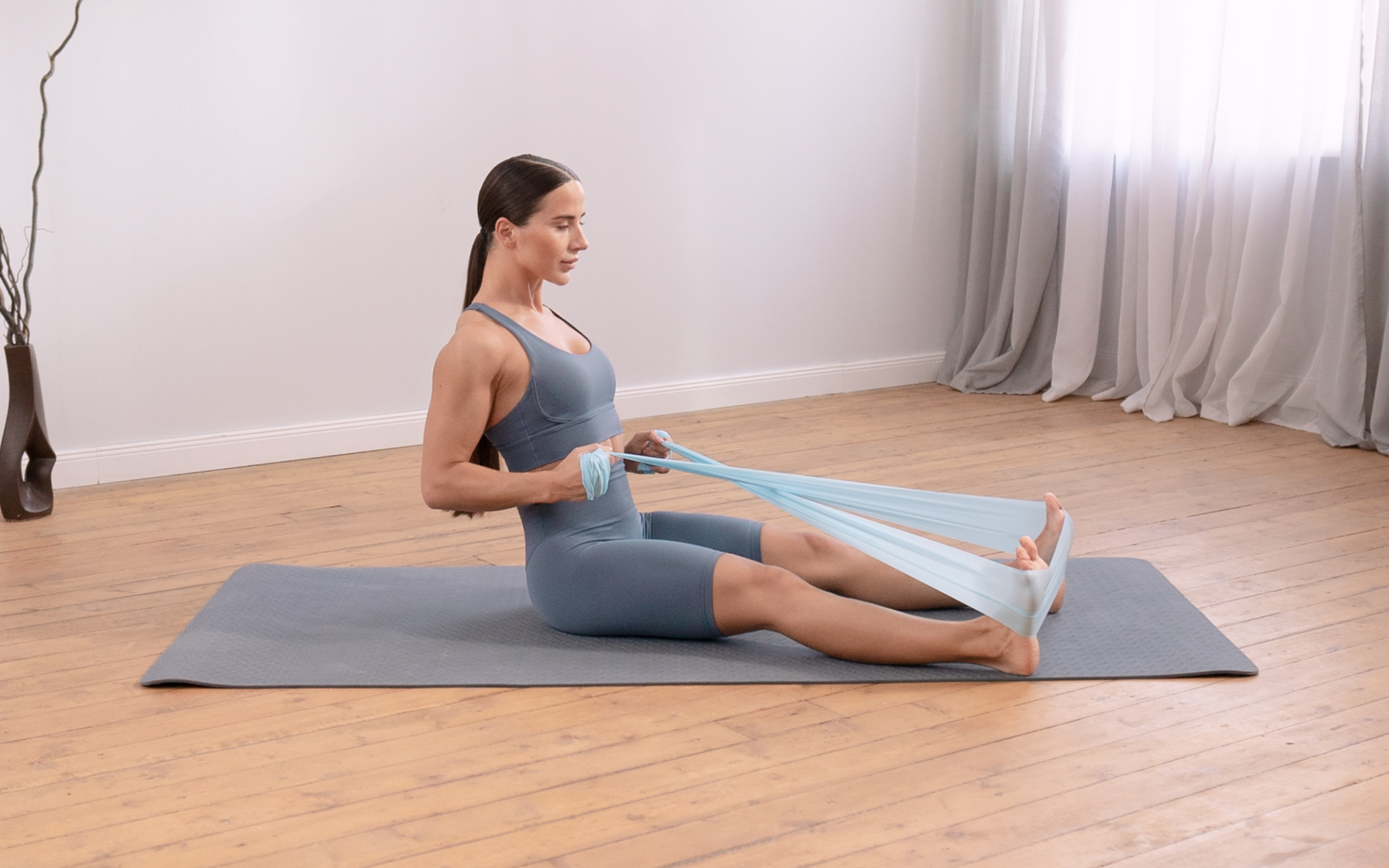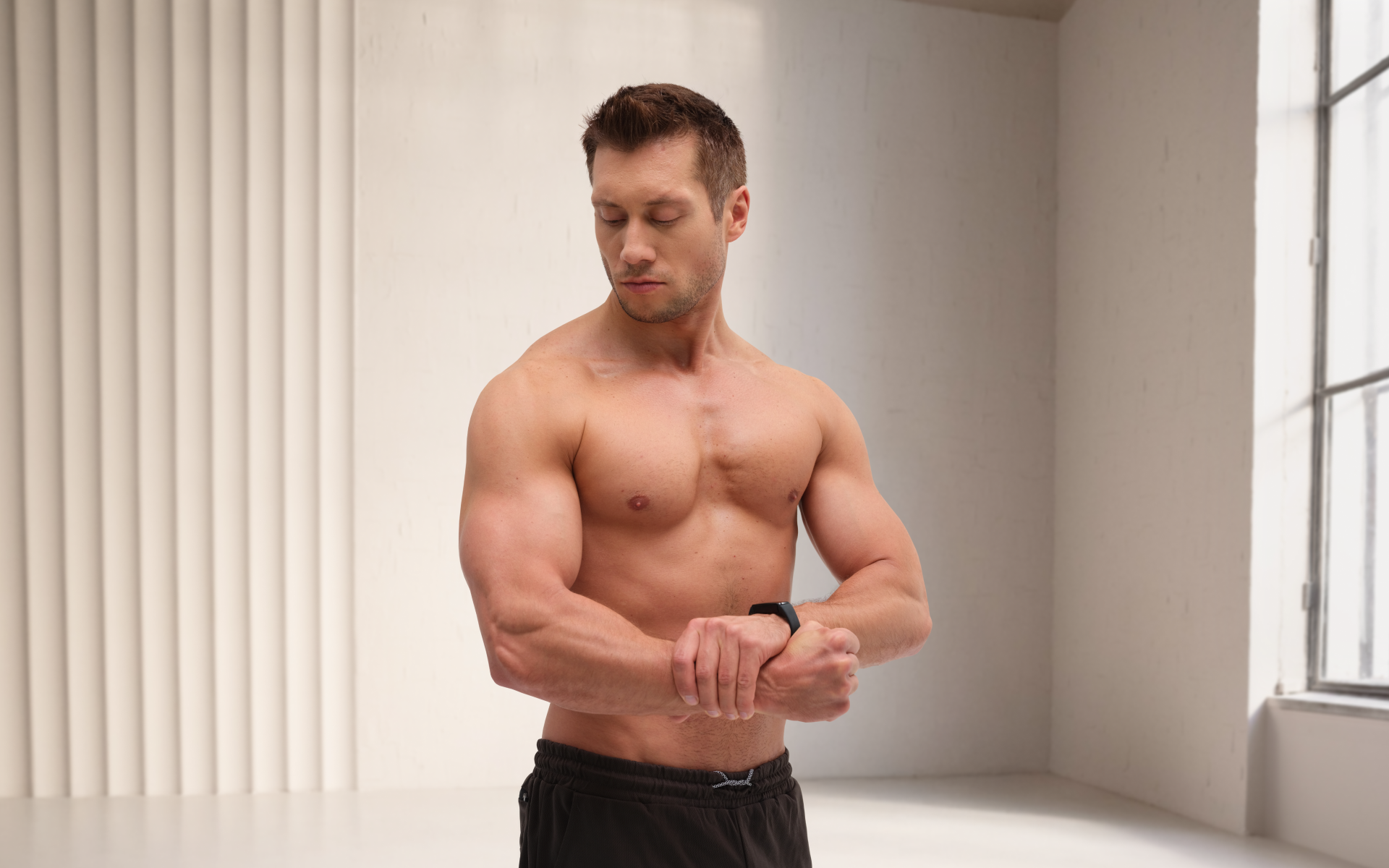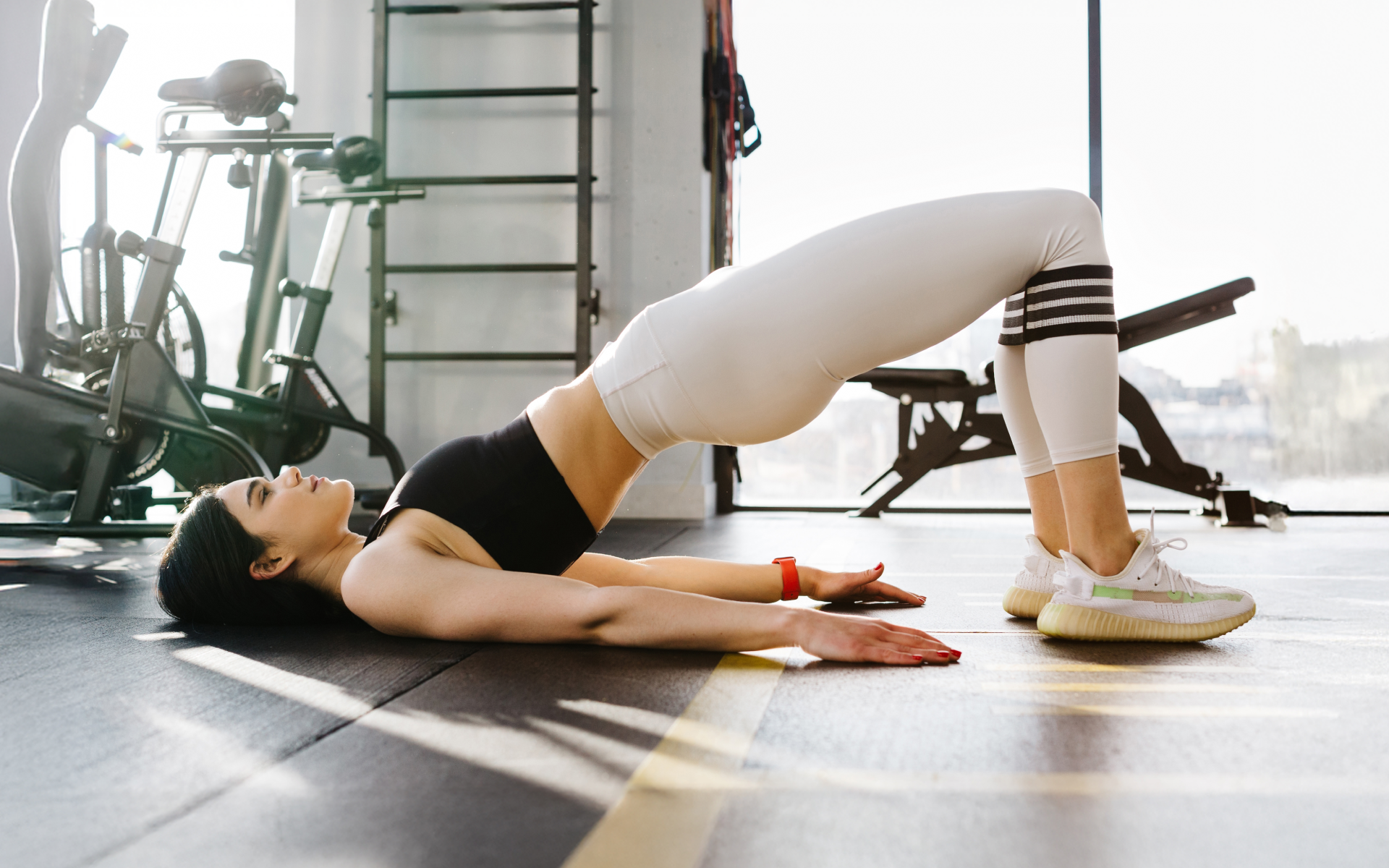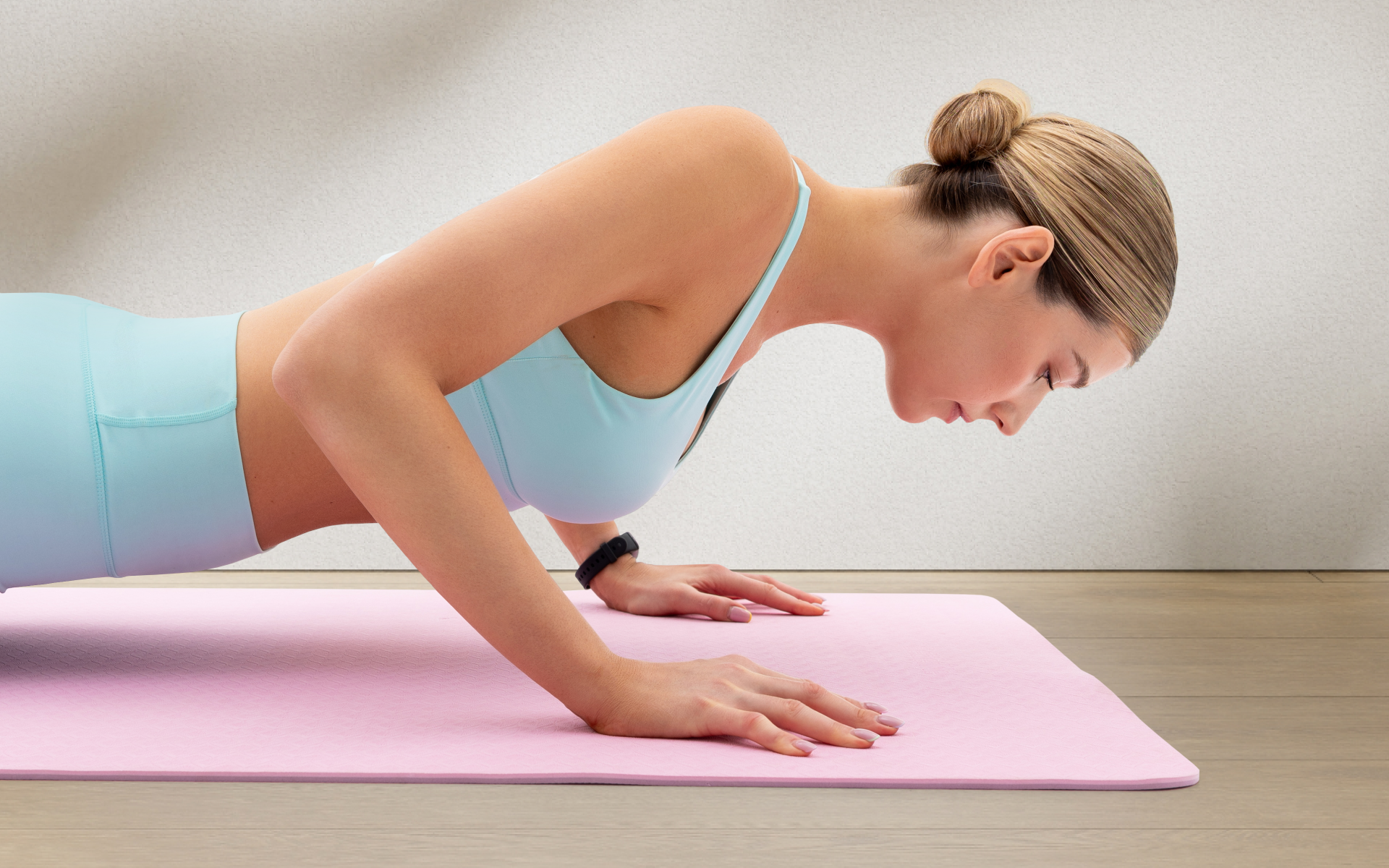Do you ever think of calisthenics as an old-school exercise? Given the buzz about fancy exercise trends and intense workouts, doing a conventional push-up may not sound appealing.
Although some people may think that it’s impossible to lose weight and gain muscle by just using your body’s weight, we can’t overlook its effectiveness. There must be a solid reason why it’s been a part of military regimes for decades. The way this regime works your muscles is quite effective, and consistent use brings lasting results.
Harvard Health highlighted calisthenics as a simple yet powerful way to stay fit without relying on equipment. You can build strength with just a little regular practice while improving endurance, flexibility, and coordination (1).
If you’re a beginner who is looking for guidance on starting calisthenics, you’ve come to the right place. This article walks you through beginner-friendly calisthenics exercises, followed by some essential tips and science behind the workouts to stay on the right track.
What Are Essential Calisthenics Beginner Exercises?
At its core, calisthenics uses your own body’s weight to improve muscle performance. When starting with calisthenics, the key is to focus on simple, bodyweight movements that lay a solid foundation of strength and control. These exercises don’t require any equipment, which makes them perfect for a calisthenics beginner workout plan you can follow anywhere, even in your living room.
Some exercises that you can include in your calisthenics workout are:
- Push-ups: This can help develop upper-body and core strength (2).
- Squats: It’s often considered a staple move for strengthening your legs and improving balance (3).
- Planks: These are considered essential for core stability and posture (4).
- Lunges: They may enhance lower-body strength while improving coordination (5).
- Pull-ups or bodyweight rows: These are often considered helpful for back and arm strength (you can use a bar, sturdy table, or resistance bands if available) (6).
These moves may look simple, but they lay the groundwork for more advanced skills later. A well-structured calisthenics beginner workout plan often combines these exercises into short circuits. The purpose is to help you improve endurance while gradually building strength.
The beauty of calisthenics is that as you get stronger, you can progress by changing angles, adding reps, or trying new variations without fancy equipment.
Read more: Your No-Sweat Simple Calisthenics Workout Plan
How Do Beginners Start Calisthenics?
If you’re new to calisthenics, focusing on the fundamentals is the best way to start. As mentioned above, the core moves such as push-ups, pull-ups, and dips, and lower-body exercises such as squats and lunges are considered the building blocks of control. You can advance your routine once you’re a pro at them.
To track progress, aim for these foundational goals before moving on:
- 10 strict pull-ups
- 15 strict dips
- 20 clean push-ups
As a beginner, whole-body routines are often more effective than split training. A simple structure, such as pull, push, squat, hinge, and core, can give you a full-body calisthenics workout in under 30 minutes.
This approach is efficient and makes it easier to build consistency. You can aim for three sessions per week, with at least one rest day between workouts to allow your muscles and nervous system to recover appropriately.
It’s the non-reliance of calisthenics on any equipment that makes it stand out. Although it’s possible to integrate some equipment, you can make significant progress by just relying on your own body. You can train in a linear style (one exercise after another with rest in between) or try circuit training, which many beginners find more engaging:
- Between exercises: Rest for 10-15 seconds
- Between circuits: Rest for 2-3 minutes
- Rounds: Start with 3 rounds per workout and build up to 4
- Reps: Aim for 5-12 reps per exercise before progressing
- Isometric holds: Start with 20 seconds and work toward 40
As a beginner, you should be aware of your form. Make sure you keep the correct posture in each move. Seeking help from a certified trainer or an authentic platform like BetterMe are arguably the best options. They can guide you on proper exercise technique and help you consistently follow a balanced exercise plan that targets the entire body and ensures gradual progression.
Whether you’re a workout beast or just a beginner making your first foray into the world of fitness and dieting – BetterMe has a lot to offer to both newbies and experts! Install the app and experience the versatility first-hand!
What Are Some Easy Calisthenics Beginner Exercises?
Calisthenics is generally a good start for anyone who is taking their first step toward fitness. The sight of complex machines may be overwhelming, but starting with calisthenics assures you that achieving a fitter body isn’t as tough as it looks. The key is to start with movements that are easy to learn, safe to perform, and give you a solid foundation for more advanced skills later.
Here are some of the easiest calisthenics beginner exercises you can try at home:
- Wall Push-Ups: A gentle introduction to push-ups, perfect for building arm and chest strength without putting too much pressure on your joints (7).
- Incline Push-Ups (on a table or bench): Slightly harder than wall push-ups but still beginner-friendly.
- Bodyweight Squats: A staple exercise for strengthening your legs and improving balance (8).
- Glute Bridges: This can be great for activating your core and glutes while lying on the floor (9).
- Knee Push-Ups: A step closer to full push-ups while keeping the movement manageable.
- Step-Ups (using a low, sturdy surface such as a stair step): These can be simple and effective for building leg strength and coordination (10).
- Planks: They are often considered the right starting point for core stability and posture (11).
Creating a workout circuit that is made up of these exercises can help beginners prepare their bodies for more sophisticated exercises in the future. Of course, this doesn’t mean jumping into highly intense workouts the next day. Instead, you should let your body recover, get used to the moves, and progress gradually.
A recent meta-analysis published in Frontiers in Physiology examined the effectiveness of functional fitness, including bodyweight exercises (12). It was found that even beginner practitioners experienced significant improvements in:
- Speed
- Strength
- Power
- Balance
- Agility
These gains were even noted among already fit athletes, which shows how impactful functional training like calisthenics can be for everyday people too. This clearly indicates that calisthenics isn’t just for advanced athletes. It’s a genuinely effective way for beginners to build strength, muscle, confidence, and functional fitness.
What Is an Example of a Calisthenics Beginner Workout Plan?
If you’d like a structured plan, here’s a calisthenics workout for complete beginners that covers all four fundamentals: pull, push, legs, and core. Perform this circuit four times, resting for 30 seconds between exercises and 2 minutes between rounds. Don’t forget to set a timer to stay on track!
Towel Roll (Pull)
- Take two towels and tie a knot at the end of each towel.
- Drape both towels over a door and close it. Grab each towel with either hand and take a step away from the door.
- Your body will be at a roughly 45-degree angle with your arms fully extended
- Bend your elbows and pull your body towards the door as if you were rowing.
- Extend your elbows to slowly return to the starting position
- Perform 4 sets of 10 reps.
Wall Push-Ups (Push)
- Stand facing a wall or frame with your hands placed at shoulder height.
- Bend your arms to move your body forward, then push back to the starting position.
- Perform 4 sets of 10 reps.
Jump Squats (Legs)
- Stand with your feet hip-width apart, holding a stable surface such as a chair or wall for balance.
- Lower into a squat until your thighs are parallel to the ground, then push back up through your heels.
- Perform 4 sets of 10 reps.
Knee Tucks (Core)
- Sit on a stable surface, leaning back about 45 degrees with your legs extended.
- Pull your knees toward your chest, then extend your legs back out.
- Perform 4 sets of 10 reps.
Types of Calisthenics Exercises by Category
As you become stronger, you can mix and match different moves to create your own calisthenics beginner workout plan:
- Pull: Rows, chin-ups, regular pull-ups
- Push: Wall push-ups, knee push-ups, dips, archer push-ups, diamond push-ups
- Core: Knee tucks, lying leg raises, planks
- Legs: jump squats, lunges, glute bridges
- Rest day: Include at least 10 minutes of light stretching for recovery
In this way, even if you have no previous training experience, you’ll have a full-body calisthenics workout that helps you build strength, improve coordination, and establish a solid routine.
Read more: Calisthenics Skills to Learn in Order: Master These 6 Moves First
What Muscles Do Calisthenics Beginner Exercises Target?
By now, you know that calisthenics offers an exercise solution for those who want to avoid crowded gyms or don’t have enough time to work out at a particular hour every day. Before we get into the muscles that are worked during calisthenics, you should know the importance of warming up and compound contractions.
- Warm-Up: Start with mobility exercises that prepare the muscles you’ll be using. Choose movements that are similar to your workout and move your joints through their full range of motion. Skip long static stretches at this stage.
- Compound Contraction: Practice engaging multiple muscles at once before diving into calisthenics. By learning to control muscle activation, you can strengthen your neuromuscular system, which helps improve coordination and balance (13).
Now, let’s do a quick breakdown of common beginner-friendly moves and the muscles they work:
- Push-ups: Chest, shoulders, triceps, and core
- Pull-ups/Wall pull-ups: Back, biceps, forearms, and lats
- Squats: Quadriceps, hamstrings, glutes, and calves
- Lunges: Glutes, hamstrings, quads, and core stabilizers
- Planks: Core, shoulders, and lower back
- Dips: Triceps, shoulders, and chest
A beginner calisthenics workout with no equipment can effectively train your whole body by combining these movements into short circuits. This training supports fat burning when performed consistently and paired with proper nutrition. These elements make it an excellent option for a beginner calisthenics workout for weight loss.
BetterMe: Health Coaching app helps you achieve your body goals with ease and efficiency by helping to choose proper meal plans and effective workouts. Start using our app and you will see good results in a short time.
What Are Common Mistakes in Calisthenics Beginner Exercises?
When you’re a newbie in calisthenics, you should beware of the following mistakes:
- Chasing flashy exercises over quality: Many beginners are attracted to extravagant-looking moves, yet they add little real value. Solid exercises that match your goals are more effective. Perfecting your form on fundamental movements will allow you to progress to more challenging exercises when your body is truly ready.
- Lack of consistency: Skipping workouts during cold weather or busy days breaks progress. Adapt instead. Train indoors on cold days or shorten sessions when time is limited. This builds long-term consistency.
- No progressive overload: Repeating the same routine again and again leads to stagnation. To grow stronger, increase difficulty by adding reps, more sets, shorter rest, or advanced technique. Tracking workouts ensures steady progress.
- Pushing too hard, ignoring recovery: Excitement makes beginners train too much and neglect rest. This often leads to injury. Small increases, such as one or two extra reps, keep growth safe and sustainable.
- Training without clear goals: Defining a clear goal directs effort and makes training effective. You can then create your workout plan to cater to you and help you improve on the skills that you truly want to develop.
By avoiding these pitfalls, a beginner calisthenics workout for strength or weight loss will likely feel more structured and rewarding.
How Many Days a Week Should a Beginner Do Calisthenics?
There’s no perfect answer to how many days you should train each week when doing only calisthenics. It depends on your level of fitness and what you want to achieve with these training sessions.
For most beginners, 2 to 4 sessions per week can provide enough training without overloading the body.
| Experience Level | Days per Week | Focus | Notes |
|---|---|---|---|
| Absolute Beginner | 2 days | Learn form, build consistency | Rest between sessions to recover |
| Beginner (1 to 3 months in) | 3 days | Strength foundation, mobility | Try a full-body routine every other day |
| Beginner-Intermediate (3 to 6 months in) | 4 days | Mix strength + skill work | Split routine: push/pull or upper/lower body |
| Beyond 6 months | 4-5 days | Skill development + progressive overload | Include active recovery sessions (yoga, stretching, walking) |
Can I Learn Calisthenics by Myself?
You can absolutely learn calisthenics by yourself. Calisthenics is all about using your body weight to exercise. All you really need is just a little bit of space and you can get a full-body workout that can be completed anywhere.
Here are some tips to further increase your chances of hitting your goals:
- Follow high-quality tutorials such as BetterMe and use them as your guide.
- Start with basic moves such as push-ups, squats, and planks, and perfect them before you move to advanced movements.
- Track your progress in reps, hold times, or just how you were feeling during a training session.
- Stay consistent. Even short workouts add meaningful results. Any movement the body does will burn calories.
- Tune in to how your body responds. Adjust intensity and rest as needed. Muscles grow during rest and break down through exercise.
The point is, when you have the grit and motivation, time and space limitations don’t matter much!
As you’re lifting and controlling your body weight, calisthenics can feel tougher than gym machines. Your stabilizing muscles, balance, and coordination all get challenged in ways you may not be used to, but that’s also why progress feels so rewarding. Most beginners start with the pull-up or push-up. These basics lay the groundwork for strength, control, and confidence. Once you’ve nailed them, advanced moves such as dips or muscle-ups become much more approachable. Calisthenics gives you a lean, athletic look. You can get strong shoulders, a defined core, and toned arms. As it’s a full-body training style, you build functional strength and mobility rather than just bulk. It depends on your starting point and consistency. Most beginners notice improvements in strength and form within a few weeks.Frequently Asked Questions
Why is calisthenics so hard for beginners?
What is the first skill you should learn in calisthenics?
What kind of body does calisthenics build?
How long will it take to learn calisthenics?
The Bottom Line
At the end of the day, calisthenics is one of the simplest and most rewarding ways to get stronger. You don’t need fancy machines or a gym membership – just your body and a little consistency. Start with the basics, stick to a beginner calisthenics workout plan, and don’t stress if progress initially feels slow. Every push-up, squat, and plank moves you closer to your goals.
Before you know it, you’ll be rocking a full-body calisthenics workout and surprising yourself with how much you can actually do.
DISCLAIMER:
This article is intended for general informational purposes only and does not serve to address individual circumstances. It is not a substitute for professional advice or help and should not be relied on for making any kind of decision-making. Any action taken as a direct or indirect result of the information in this article is entirely at your own risk and is your sole responsibility.
BetterMe, its content staff, and its medical advisors accept no responsibility for inaccuracies, errors, misstatements, inconsistencies, or omissions and specifically disclaim any liability, loss or risk, personal, professional or otherwise, which may be incurred as a consequence, directly or indirectly, of the use and/or application of any content.
You should always seek the advice of your physician or other qualified health provider with any questions you may have regarding a medical condition or your specific situation. Never disregard professional medical advice or delay seeking it because of BetterMe content. If you suspect or think you may have a medical emergency, call your doctor.
SOURCES:
- Calisthenics: An effective, low-frills way to stay fit (2023, health.harvard.edu)
- The Effects of Push-Up Training on Muscular Strength and Muscular Endurance (2018, researchgate.net)
- The Back Squat: A Proposed Assessment of Functional Deficits and Technical Factors That Limit Performance (2014, journals.lww.com)
- Comparison of three different surface plank exercises on core muscle activity (2016, jptrs.org)
- THE INFLUENCE OF LOADING DURING FORWARD LUNGE EXERCISE TRAINING ON STRENGTH, POWER AND AGILITY (2023, researchgate.net)
- No Time to Lift? Designing Time-Efficient Training Programs for Strength and Hypertrophy: A Narrative Review (2021, pmc.ncbi.nlm.nih.gov)
- Shoulder kinematics during the wall push-up plus exercise (2009, pubmed.ncbi.nlm.nih.gov)
- Effects of progressive body-weight versus barbell back squat training on strength, hypertrophy and body fat among sedentary young women (2023, nature.com)
- The effects of gluteus muscle strengthening exercise and lumbar stabilization exercise on lumbar muscle strength and balance in chronic low back pain patients (2015, pmc.ncbi.nlm.nih.gov)
- Effect of Soft Surface Stepping Exercise on Physical Activity Among Community-Dwelling Elderly: A Prospective Randomized Controlled Trial (2025, e-arm.org)
- Strength and Balance Improvement with Plank Exercise Variations (2023, researchgate.net)
- Effect of Functional Training on Physical Fitness Among Athletes: A Systematic Review (2021, pmc.ncbi.nlm.nih.gov)
- Effects of neuromuscular training on dynamic balance ability in athletes: A systematic review and meta-analysis (2024, sciencedirect.com)
